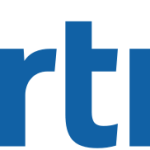- Industry: Consulting
- Number of terms: 1807
- Number of blossaries: 2
- Company Profile:
Gartner delivers technology research to global technology business leaders to make informed decisions on key initiatives.
Identity and access management (IAM) is the security discipline that enables the right individuals to access the right resources at the right times for the right reasons.
IAM addresses the mission-critical need to ensure appropriate access to resources across increasingly heterogeneous technology environments, and to meet increasingly rigorous compliance requirements. This security practice is a crucial undertaking for any enterprise. It is increasingly business-aligned, and it requires business skills, not just technical expertise.
Enterprises that develop mature IAM capabilities can reduce their identity management costs and, more importantly, become significantly more agile in supporting new business initiatives.
View Gartner’s FREE research on Big Data Analytics.
SummaryArticle NameIdentity ManagementGartner, Inc.Gartner, Inc.DescriptionIdentity and access management (IAM) is the security discipline that enables the right individuals to access the right resources at the right times for the right reasons. View Gartner's free research on access management.
Industry:Technology
The process of gathering data about identity and access, and converting it to information and knowledge for action-oriented insight and intelligent decision making in IT and business.
Industry:Technology
Idea management is a structured process of generating, capturing, discussing and improving, organizing, evaluating and prioritizing valuable insight or alternative thinking that would otherwise not have emerged through normal processes.
Industry:Technology
A social environment where participants can enter an idea for social validation and contribution. Other participants can support and augment the idea, ignore it or refute it.
Industry:Technology
The International Classification of Diseases, Tenth Revision (ICD-10) is the newest version of the common tool used to turn diagnoses and procedures into a universally recognized machine-readable sequence. It replaces the decades-old ICD-9 code standard. It has greater complexity, because it identifies twice as many diagnostic codes as ICD-9, 20 times as many injuries and 50 times as many procedures. Moreover, ICD-10 allows for alphanumeric codes and modernizes the fundamental structure for code assignment now and in future releases. ICD-10 is used almost exclusively in the U.S., although its use will not become mandatory until 1 October 2013. Implementation of the U.S. Health Insurance Portability and Accountability Act (HIPAA) X12, version 5010 standard is a prerequisite for using ICD-10. This standard will become mandatory on 1 January 2012.Implementation of HIPAA 5010 is largely a technical electronic data interchange similar to a version control of an application. ICD-10 is much more complex because it changes IT and business operation attributes. Correctly implemented, it will increase coding accuracy and improve the care management, reimbursement and rating processes. In the short term, however, it is expensive and difficult to implement because of the many processes and applications affected by coding changes. It will also cut claims-processing auto-adjudication rates.
Industry:Technology
Identity and access management (IAM) as a service (IAMaaS) refers to software as a service (SaaS) forms of IAM that require minimal or no enterprise on-premises presence of hardware or software.
Industry:Technology
Equipment forming part of the input/output system of a computer. Under the control of input/output (I/O) commands, the channel transfers blocks of data between main storage and peripherals.
Industry:Technology
Refers to programs with a large number of I/O (input/output) operations, which slow the central processing unit (CPU).
Industry:Technology
A document-formatting language derived from the Standard Generalized Markup Language (SGML), predominately used to create Web pages. The user’s browser interprets HTML commands and formats the page layout, fonts and graphics on the screen. One of the more powerful features of HTML is its ability to create hyperlinks that enable the user to navigate between documents and files with a single click. HTTP is also sometimes used for messaging attachments as a way of supporting rich text formatting across product boundaries.
HTML that is generated by a program or service is considered “dynamically generated HTML,” which has been confused with the Netscape and Microsoft technology called dynamic HTML (DHTML). These technologies offer client-side mechanisms for enhancing the capabilities of the Web browser and HTML documents. Dynamically generated HTML might contain DHTML, but they are not the same thing.
Industry:Technology
